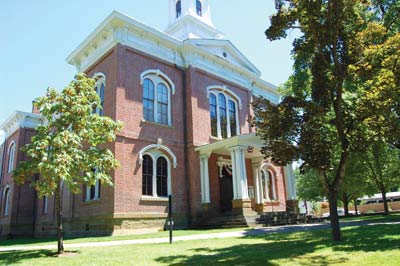Editor’s Note: In recent weeks, the Jacksonville City Council voted to borrow and utilize up to 1 million dollars from its Urban Renewal program to rehabilitate the historic Courthouse for city offices and for other approved uses. The following primer is excerpted from a staff report provided by Elaine Howard, the city’s Urban Renewal consultant.
What is Urban Renewal?
Urban renewal is one of the few tools for encouraging local economic development. It is unique in that it has its own funding source, “tax increment financing.” The program is authorized under state law and implemented locally that allows for the concentrated use of property tax revenues to upgrade certain designated areas of a city or county. These areas are called “blighted” by state statute and typically contain sections of a city that are underdeveloped and not contributing fully to the local economy. The area can have buildings in need of renovation, properties which should be developed or redeveloped, or utilities and street and pedestrian systems in poor repair or needing upgrading.
The underpinning theory of urban renewal is that if these properties are upgraded, they will contribute more substantially to the local economy and to the property taxes which support all of the taxing jurisdictions.
What is the History of Jacksonville’s Urban Renewal Program?
An urban renewal plan establishes an urban renewal boundary, goals, and objectives for the area, and outlines projects and programs that will help to improve the conditions in the area. The plan also sets a limit on the amount of money which can be used to fund these projects and programs, called a “maximum indebtedness.” The urban renewal plan must be adopted by the City Council. The City of Jacksonville’s urban renewal plan was adopted in 2002 with the goals of conserving historically- significant places and properties, insuring a more attractive, functional and economically-viable city, encouraging the expansion and development of businesses that will produce jobs, and increasing property values in the Area. The plan was amended in 2014 to allow for the use of funds to upgrade publicly-owned historic structures. (Beekman House, Beekman Bank, Catholic Rectory and Courthouse, received from Jackson County)
What types of Projects are Eligible under Urban Renewal?
- Construction or improvement of public streets, sidewalks, utilities, parks, and other public uses
- Storefront improvements
- Participation with developers for property improvement
- Rehabilitation of existing buildings, historic or otherwise
How is an Urban Renewal Plan Financed?
When an urban renewal plan is adopted, the county assessor calculates the total assessed value of the area and establishes this value as the “frozen base.” Growth above the base is called the “increment.” Tax increment revenues are the property tax revenues generated off the increase in the assessed values over the frozen base (not including rates for General Obligation Bonds and Local Levies approved by voters after October, 2001).
How Does Tax Increment Financing Affect Overlapping Taxing Districts?
Taxing jurisdictions gain revenues through the collection of property taxes. Property tax increases come through new development and the statutory limit of 3% increase in assessed values on existing real property. With tax increment financing, the permanent rate property taxes on the growth in assessed value in the urban renewal area are allocated to the Urban Renewal Agency and not the taxing district. The taxing jurisdictions are still able to collect the property tax revenues from the assessed value of the frozen base, but increases in revenues are allocated to the Urban Renewal Agency for use within the urban renewal area.
How Does Tax Increment Financing Affect Property Tax Payers?
After an urban renewal plan is adopted, taxpayers will see a line item on their property tax statements for urban renewal. This can be quite confusing because even if you are not physically located in the area, you will see an indication of the impact of urban renewal on your property tax bill. Your overall tax bill does not increase, but the allocation of revenues received from your payment is changed as a portion of that payment now goes to urban renewal. This is called “division of taxes” and is the administrative way assessors must calculate the urban renewal revenue.
